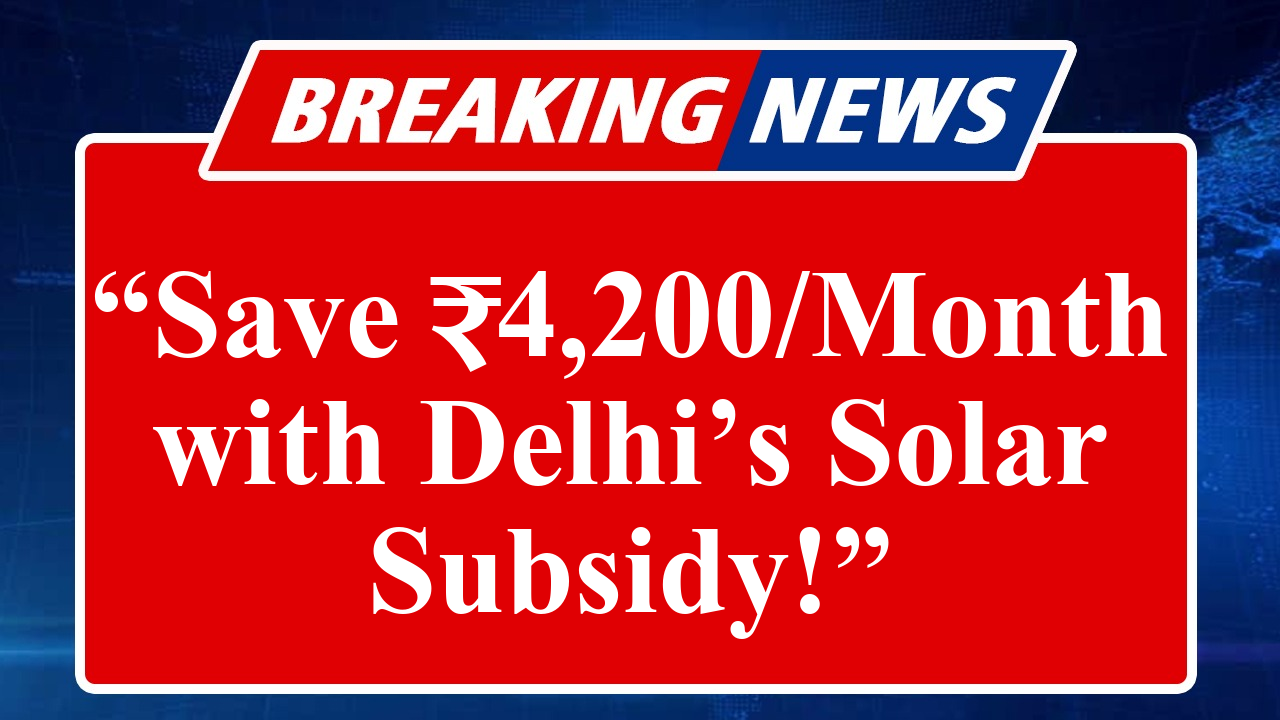Delhi’s new solar subsidy scheme offers up to ₹1.08 lakh for 3 kW rooftop solar installations, combining ₹78,000 from the Centre and ₹30,000 from the state. Aimed at 2.3 lakh households, it promotes clean energy, reduces electricity costs by ₹4,200 monthly, and supports loans for affordability.
Delhi Boosts Rooftop Solar with ₹1.08 Lakh Subsidy Scheme
The Delhi government has rolled out an ambitious solar subsidy scheme under the ‘PM Surya Ghar: Muft Bijli Yojana State Top-Up,’ enhancing the central government’s existing initiative. Approved on May 20, 2025, the scheme provides a total subsidy of ₹1.08 lakh for installing 3 kW rooftop solar panels, comprising ₹78,000 from the central government’s PM Surya Ghar Yojana and an additional ₹30,000 from the Delhi government. This move, announced by Chief Minister Rekha Gupta, aims to make solar energy accessible to 2.3 lakh residential units over the next three years, with a budget allocation of ₹50 crore.
Under the scheme, households can save an average of ₹4,200 per month on electricity bills by adopting solar power, with the government facilitating zero initial cost through partnerships with financial institutions for easy loan options to cover the remaining installation cost of approximately ₹90,000. The subsidy structure offers ₹10,000 per kW for systems up to 3 kW, making it one of the most generous solar incentives in India. For smaller setups, such as a 1 kW system, residents can avail a direct state subsidy of ₹10,000.
The initiative aligns with Delhi’s push for a ‘Green Delhi,’ as emphasized by CM Gupta, who highlighted the scheme’s role in promoting clean energy and reducing pollution. Environment Minister Manjinder Singh Sirsa noted that the enhanced subsidy is a bold step to accelerate rooftop solar adoption, though experts caution that implementation challenges, such as vendor selection and bureaucratic hurdles, could pose obstacles. The scheme complements the central government’s PM Surya Ghar Yojana, launched on February 29, 2024, which targets 1 crore rooftop solar installations nationwide.
In addition to residential subsidies, the Delhi government plans to generate 30 MW of solar power by installing panels along the Najafgarh Drain, directly supplying electricity to West and South Delhi. This move will replace outdated HVDS transformers, improving power distribution efficiency. Power Minister Ashish Sood stated that the enhanced subsidy is expected to drive widespread adoption, making solar energy a viable option for more households.
However, the scheme’s success hinges on addressing logistical challenges. Experts like Binit Das from the Centre for Science and Environment have pointed out that while the subsidy is a significant incentive, streamlining vendor selection and loan processes is critical to ensure accessibility. The Delhi government is also tackling pollution through complementary measures, such as deploying 210 water sprinklers and 70 mechanical sweepers to improve air quality, particularly during winter.
The initiative has garnered positive sentiment, with posts on X praising the combined central and state subsidies for making solar power affordable. However, some users have raised concerns about the high cost of domestically manufactured solar panels, which could offset subsidy benefits. Despite these challenges, the scheme marks a significant step toward sustainable energy in the capital, positioning Delhi as a leader in India’s clean energy transition.
Disclaimer: This article is based on recent news reports, government announcements, and posts on X. Information is sourced from credible outlets like The Hindu, Hindustan Times, and Moneycontrol, but readers are advised to verify details with official government sources for accuracy.

